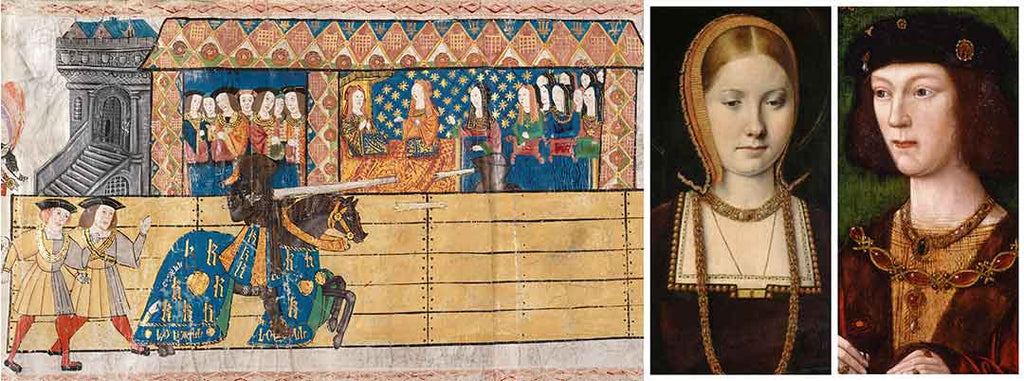I’ve been fascinated by several archeological jewelry finds recently, which involve powerful women. These finds combine three of my interests: women’s leadership, archeology, and jewelry. So, in honor of the end of Women’s History Month, here are two great stories!
A Tudor Locket

The first treasure is a heart-shaped, almost solid gold hinged locket found in England. Researchers theorize that it may have been given by Queen Katherine of Aragon to her husband, King Henry VIII, in February of 1511, to wear during a jousting tournament celebrating the birth of their first son. Contestants often received such gifts from high-status women.
The young royals were aged 19 and 25 at this point, and still newlyweds. Katherine may have also been marking a personal victory with this gift, because she had fought and survived a hard-won battle to marry Henry, after her first husband, Henry’s older brother Arthur, died prematurely.
On the locket’s front are delicately wrought Tudor roses and a pomegranate bush, which were the symbols of Henry and Katherine. The initials “H” and “K” are inscribed on the back, as well as French inscriptions of the 16th century word for “always” on both sides.
Though research is ongoing, some tantalizing clues link it to the royals: The most important, besides its high value, is that there is a surviving illustration of the celebratory tournament, showing Henry tilting in front of Katherine.

Significantly, gold hearts, the royal initials of H and K, and the use of French words are featured on the tournament image – just as they are on the gold pendant. French chivalric ideas were fashionable, and Henry called himself “Sir Cuer Loyall” (Sir Loyal Heart) that day.
Sadly – and for history’s sake, profoundly important – the couple’s infant son did not survive, and many years later, Henry cast aside Katherine for Anne Boleyn in his quest for a son and heir, which changed the course of history.
A Female Christian Leader’s Necklace

The second find, also unearthed in England, is a 1,300-year-old gold-and-gemstone necklace found in an ancient grave site. Experts believe it may have belonged to a woman who was an early Christian leader, such as an abbess. Though later banned from leadership, women were welcomed as leaders by the early church.

The elaborate necklace, with motifs reminiscent of the Byzantine Mediterranean, features pendants and beads made from Roman coins, gold, garnets, glass, and precious stones. The centerpiece of the necklace is a decorated rectangular pendant with a cross motif.
The Museum of London’s archeology department says this necklace and burial site are like other such female graves found from this time. And several other necklaces uncovered from these graves also echo the same Byzantine style. At that time, missionaries from the East were visiting England and bringing these new motifs with them, showing the fascinating spread of not just religion, but design.
Powerful women, whether royal or religious, have often been neglected in history’s narration. These necklaces bring back some dignity to the lives they lived. Fine jewelry has a way of surviving, even if their owners’ stories do not. Long may it continue to do so.

